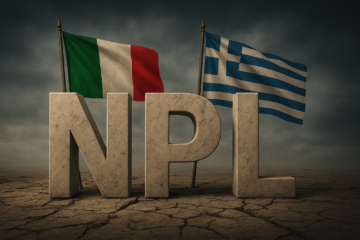Virtu Financial Inc.; market cap (as of 17/04/2015): $3.2bn
Introduction
On April 16, Virtu Financial, one of the world’s largest high-frequency trading companies, commenced trading on the Nasdaq under the ticker symbol “VIRT”. The initial public offering, first ever in the HFT sector, proved successful as the company raised close to $314.1m, selling 16.5m shares at $19 per share, the high point of its predicted price range. According to the company’s chief executive, Douglas Cifu, the timing of the IPO came as a result of strong company performance and favourable market conditions. Indeed, according to the company’s estimates for the three months ended March 31, 2015 the company’s adjusted EBITDA was predicted to be anywhere between $99m and $105m, representing an increase of between 40% and 48% compared to the same period in 2014.
About Virtu Financial
Virtu Financial is a technology-enabled market maker and liquidity provider to the global financial markets. It provides liquidity and competitive pricing in foreign currency markets directly to market participants through its VFX trading platform and other customized liquidity provisions. It is registered as a financial holding company and is based in New York, with trading and development groups in North America, Europe and Asia. In most cases, the company does not have customers in a traditional sense. Rather, it makes markets for global banks, brokers and other intermediaries, in addition to retail and institutional investors. It facilitates market-making for more than 11,000 securities and other financial products, trading on upwards of 225 exchanges in 34 countries.
The company labels its market making activities as “market neutral”, hence free of speculation on which direction the market will take. It does not engage in the types of principal investing and predictive, momentum and signal trading in which some of its competitors and other broker-dealers and trading firms engage. Last year, it averaged about 5.3m trades a day globally across asset classes and has profitably exited 49% of overall positions.
Virtu Financial’s revenue is primarily generated by the VFX technology platform through which it provides quotations for buyers and sellers in equities, commodities, currencies, options, fixed income, and other securities on various exchanges, markets, and liquidity pools. Interest and dividends on securities that the company holds make up another revenue source. Beginning in 2013, Virtu also started to sell licensed technology and related services, which further drove up its revenue figures. Its strategy of pursuing broad diversification, combined with its proprietary technology platform and low-cost structure, allow for a high degree of operational efficiency and a profitable business model.
In 2014 the company earned $723m in revenues, a consistent increase from $664m achieved in 2013 and $615m in 2012. In terms of net income, Virtu achieved a significant rise on previous years by earning $190m in 2014; up 4% from the year before and more than 215% compared to its 2012 figures. As a comparison, a direct competitor KCG Holdings earned $1.2bn in revenues and $61m in profit last year. In addition, Virtu’s prospectus indicates that the company has been so successful that it only had one day of negative trading in the past 1,485 trading days.
About High-frequency trading
High frequency trading has recently been under increased regulatory scrutiny, in particular by the SEC and the Commodity Futures Trading Commission. Last year, well-known market critic Michael Lewis published a book “Flash Boys” presenting the potential malpractices in high frequency trading which provide these companies with an unfair advantage over other traders. The negative publicity and controversy generated by the book were one of the main reasons for Virtu’s postponement of its public offering that was initially planned for spring 2014. Even though the company’s chief executive indicated that the above-mentioned controversy was falsely ascribed to Virtu and that the company operates a different business model, regulatory and legal uncertainties have nonetheless been noted as a potential risk factor in the company’s IPO prospectus.
IPO details
In the initial public offering, the company has decided to list four classes of common stock, with two of them – Class B and Class D – having 10 votes per share and the other two – Class A and Class C – having one vote per share. Following the IPO completion, Virtu intends to use some of the net proceeds for working capital and general corporate purposes, which may include financing growth. The largest part, however, will go towards repurchasing of common stock from the Silver Lake post-IPO stockholders at a net price equal to the price paid by the underwriters for shares in this offering.
The market reacted positively to Virtu Financial’s offering. At the end of the first day of trading, Virtu’s shares traded at $22.18, nearly 17% above the $19 offering price. This implied a $3.2bn valuation of the company, up nearly $600m from the $2.6bn pre-IPO planned valuation.
The beginning of 2015 has so far been marked by a relatively slow start for U.S. company listings with just 38 companies going public to date, a number nearly 60% fewer compared to the same time frame last year. Such a fall in activity has occurred despite successful listings of a number of prominent companies, including fast-food chain Shake Shack, the online storage provider Box and the web registrar firm GoDaddy. However, recent listings of Virtu Financial as well as two other prominent, albeit completely different companies – Etsy, the online bazaar for vintage and handmade goods and Party City, the largest party goods retailer in the U.S. – have attracted investor interest and seem to be reviving the stock market. Investors valued Etsy at $1.8bn, Party City at just under $2bn and Virtu at $2.6bn – all three at the top end of their respective price ranges. As another indication of strong investor confidence, all three companies experienced a surge in the share price on their debut trading day.
The lead underwriters for Virtu Financial’s listing were Goldman Sachs, J.P. Morgan and Sandler O’Neill. BMO Capital Markets, Citi, Credit Suisse, Evercore Partners and UBS were also involved in the underwriting process.
[edmc id= 2594]Download as PDF[/edmc]



0 Comments